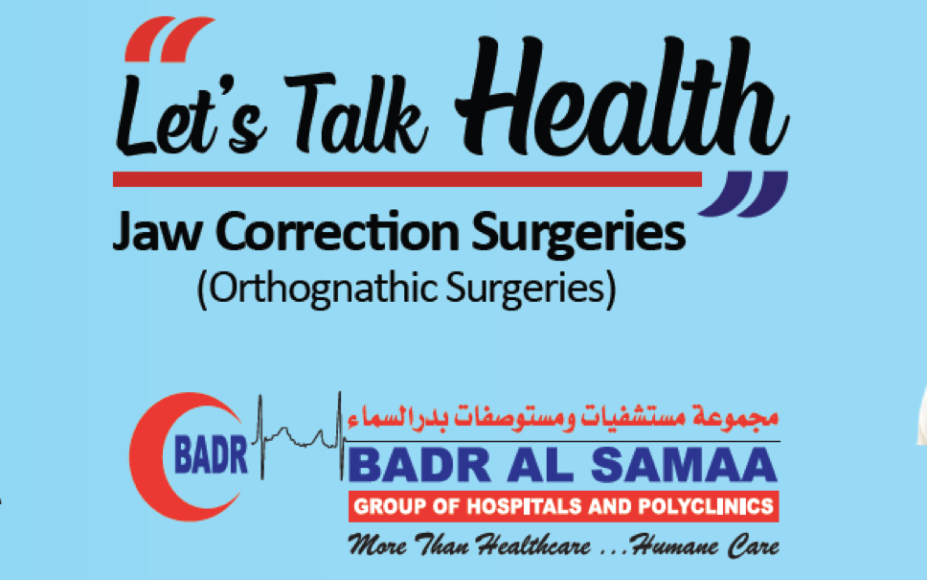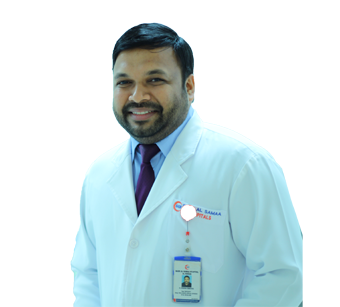
 Request An Appointment
Video Consultation
Request An Appointment
Video Consultation

On 15 JANUARY 2022 | BE AWARE

Jaw Correction Surgeries (Orthognathic Surgeries)
Orthognathic (a Greek term, orthos means "straight" and gnathos means "jaw") Surgery commonly known as Jaw surgery focuses on correcting irregularities of the jaw bones and also realigns the jaws and teeth to improve their functionality. This also helps in improving facial appearances. Considering outcomes, intricacies of occlusion (the way the teeth bite) and facial appearances, the procedure becomes a complex one and required a lot of planning.
What is Orthognathic Surgery or Jaw surgery?
Orthognathic surgery (jaw surgery) is a treatment involving Orthodontics and Oral and Maxillofacial surgery that have dramatic and positive effects on many aspects of the patient’s life. It is recommended when the jaw issue can’t be addressed with orthodontic treatment alone.
What types of cases require Orthognathic surgery?
When there is a large mismatch in the position of the jaws relative to one another, surgery is needed because orthodontic tooth movement alone is not enough to correct the bad bite. An example of this is when the upper jaw doesn’t develop properly so that the lower jaw appears too far forward and the lower front teeth are in front of the upper front teeth.
How does orthodontic treatment and surgery work together to position the jaws and teeth properly?
The orthodontist and the surgeon works together to determine the best treatment plan after a good clinical examination, photographic analysis, model study, radiographic and prediction analysis. For example, the lower jaw may be too long or too short, or the problem may be that the upper jaw is too forward. The orthodontist analyzes the teeth positions to determine the type of teeth movement needed to achieve a good bite. The surgeon does an analysis of the size, shape, and symmetry of the upper and lower jaw bones and decides which type of jaw surgery is needed for the patient.
What is the role of Orthodontics in Orthognathic surgery?
Orthodontic treatment is divided into pre-surgical and post-surgical phase. The pre-surgical phase involves the leveling and aligning of teeth, correct the poor angulations of teeth and coordination of upper and lower arches such that after the surgery we achieve a good bite. Pre-surgical orthodontics will show the true magnitude of skeletal problem hence allowing optimal skeletal correction at surgery. Post-surgical orthodontics usually starts 6 to 8 weeks after surgery and involves finishing and detailing of bite providing better stability after surgery. Once a good bite is achieved and treatment is completed, retainers are provided to the patient. Patient is asked to come for a regular review check up after every 3 months.
How does the surgeon know exactly where to reposition the jaws?
After the pre-surgical orthodontic phase, the surgeon will do mock model surgery after facebow transfer and also performs prediction analysis using sophisticated software that allows the surgeon to see exactly how many millimeters and degrees of movement are needed in 3 dimensions in order to bring the teeth into the proper bite and achieve symmetry of the face.
How does the jaw stay in its new, corrected position?
In orthognathic surgery, the jaws are positioned properly through cuts in the bone, and small, specially designed bone plates and screws are placed to keep the jaw(s) in the proper position. Most patients also have the jaws held together using wires or tiny orthodontic rubber bands (elastics) between the upper and lower braces for up to 2-3 weeks. This is only needed during the early healing process so there is no movement where the bone was cut during surgery.
Is the patient asleep for the surgery?
Yes, the surgery is done in a hospital operating room under general anesthesia. Most patients stay in the hospital 1-2 nights after surgery.
How will the patient eat if the jaws are wired together after surgery?
Most patients do not require more than 2-3 weeks of being wired or rubber banded closed, and frequently less time is needed. During that time, it is difficult to eat, speak or brushing. Patient is advised to have a liquid or pureed diet and some temporary weight loss is common.
What are the benefits of orthognathic surgery?
Corrective jaw surgery drastically improves the smil,; chewing, speaking, facial esthetics of the patient .It is also useful in treating patients with temporo mandibular joint (jaw joint) disorders, skeletal problems in cleft patients.
What is the ideal age for Orthognathic surgery?
Orthognathic surgery is performed once the jaws have stopped growing. Mostly it is in the late teens and early 20’s. Orthognathic surgery can be done for mature adults as well, as long as their health is good.
About Doctors
Dr. Krishnakumar MG is an expert and vastly experienced Oral and Maxillofacial Surgeon. He is highly skilled in evaluating and treating patients for a wide range of problems of the mouth including wisdom tooth impaction, cysts & tumours, head and neck trauma, soft tissue injuries, orthognathic surgery (jaw surgery), temporomandibular joint disorders (jaw joint)and dental implants.
-----------------------------------------------------------------------------------------------------------------
Dr. Saptarshi Hazarika is an expert and vastly experienced Specialist Orthodontist. His areas of interest are Nasoavleolar Molding for cleft lip/palate patient and cleft orthodontics, orthognathic surgery (jaw surgery), myofunctional appliances, conventional and self ligating braces, invisalign and lingual orthodontics, temporo-mandibular joint disorders (jaw joint).
For more information and appointments please call 92263488 / 24799760 or visit: www.badralsamaahospitals.com

Dr. Saptarshi Hazarika
MDS (ORTHODONTICS & DENTOFACIAL ORTHOPAEDICS), M.ORTH RCS (EDINBURGH), F (ORTH) RCS (EDINBURGH),CERTIFIED NASOALVEOLAR MOLDING (NYU, USA).
SPECIALIST ORTHODONTIST

Dr. Krishnakumar MG
MDS Oral & maxillofacial Surgery, Did implantology certificate course GMI Spain
CHIEF DENTIST

​This fictional story seeks to answer the mo...

​Common skin problems like acne, wrinkles, a...

Twelve year old Riya* was a loner. She didn’...

What is Nipah Virus Infection?The Nipah Virus (NiV...
Lost of Bitcoin? Don't panic! Check out Mighty Hacker Recovery on YouTube for expert guidance and tips on recovering your lost crypto assets.. Your Bitcoin might not be lost forever! WhatsApp us on 4 two 5 - 2 zero 9 - 5 7 6 one
1 year ago Harry Jackson